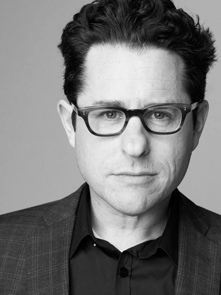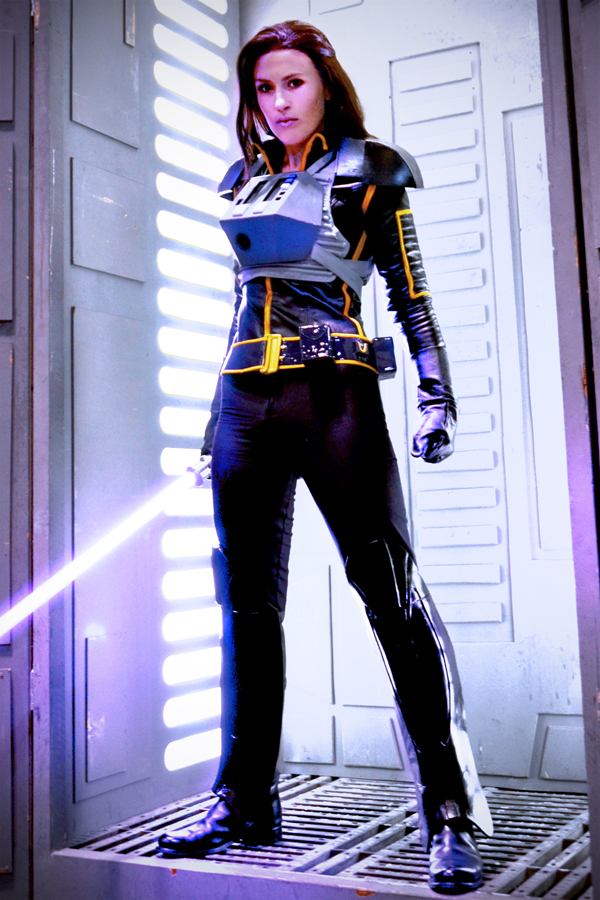Seven for VII: Considering the Arndt-Abrams Star Wars Movie
Between the Sequel Trilogy and the newly confirmed standalones, rumors about the new Star Wars movies are flying left and right. Some ultimately have proven true, while others have turned out to be unfounded or inaccurate. With interest levels high not just in the fandom but also the entertainment media, the trend no doubt will continue for many months to come.
Rather than try to read the tea leaves of various reported rumors, we thought it would be fun to speculate about Episode VII from a different perspective – by considering inferences that might be drawn from factors that seem likely to play a role in the movie’s development. So here’s our list of seven considerations to ponder in anticipating Episode VII.
1. The Title. True, we don’t know whether the movie’s name will contain three words (like Episodes I and IV) or four (like Episodes II, III, V, and VI), but we do know the first part of its title – Star Wars: Episode VII. By using that label, Lucasfilm clearly indicates that the movie and its companions, Episodes VIII and IX, comprise a new trilogy in the Skywalker family saga told in Episodes I-VI. Other new Star Wars movies, like the standalones in development by Lawrence Kasdan and Simon Kinberg that Disney CEO Bog Iger described as “not part of the overall saga,” presumably won’t carry the “Episode” moniker. Just like the Original Trilogy and Prequel Trilogy, then, we can expect the Sequel Trilogy to feature a protagonist from the Skywalker lineage, aged roughly in the early 20s, experiencing a Hero’s Journey coming-of-age mythic tale a generation after the previous epic journey.
2. The Maker. When George Lucas made the Original Trilogy, he was a young upstart filmmaker rebelling against the entrenched Hollywood hierarchies. By the time of the Prequel Trilogy, he was presiding over his own financial empire and eminently aware of dangerous temptations of greed and power in both Hollywood and American politics. Now, Lucas’ life has transitioned once more: he is happily betrothed to a highly successful professional, Mellody Hobson; his children have grown up and moved onto careers of their own, including his daughter Amanda’s success as an MMA fighter; and he has retired as CEO of the company he founded, passing its leadership to a trusted friend, Kathleen Kennedy. In the Sequel Trilogy, his iconic characters may be facing similar transitions in their own personal lives and professional legacies.
3. The Next Generation. With George Lucas passing the torch, Michael Arndt and J.J. Abrams are the first of the next generation of Star Wars filmmakers. The future of the franchise rests in their hands, and it’s no small feat to follow in the Maker’s footsteps. Arndt’s Oscar-nominated screenplay for Toy Story 3 is itself a tale of growing up, moving on, and accepting generational change. And as Sam Witwer noted in his recent interview with RebelForce Radio, Abrams and his casting director already have achieved great success at re-casting iconic roles in Star Trek. If the Sequel Trilogy is only one generation removed, in-universe, from the Original Trilogy, then Han, Luke, and Leia would only be in their mid-forties – and Abrams and Arndt would carry the burden not only of making fans care about the next generation of Star Wars heroic characters, but also of leading them to accept the change of new faces playing old favorites.
4. The Clone Wars. When Season Five ends a few short weeks from now, The Clone Wars already will include more than 100 episodes containing nearly 40 hours of Star Wars stories – nearly six times as much onscreen content as the OT and PT combined. There likely is no better source of George Lucas’ most developed insights into Star Wars and its themes than the animated series. The Mortis arc in Season Three added new depth to the concept of keeping the Force in balance. Stories featuring Mother Talzin, Savage Opress, and Darth Maul have explored the powers and consequences of the dark side of the Force. And the strengths and vulnerabilities of the Jedi, both as an Order and individually, have played an ongoing role in the series. Despite challenges like his undercover mission posing as Rako Hardeen and his old feelings for Duchess Satine, Obi-Wan consistently proves himself as the great Jedi we know he will continue to be under even worse circumstances in Revenge of the Sith. From the beginning, Ahsoka has been a foil to Anakin, and though some of his independence and self-confidence has rubbed off on her, she continues to choose duty and self-control in the face of emotional challenges. And while The Clone Wars has shown Anakin as a good man and leader and a war hero, the seeds of his inevitable fall remain evident in his flaws.

5. The Expanded Universe. In the videos released shortly after Episode VII was announced, Kathleen Kennedy referred to the Harry Potter series as books directly adapted into films, which the Sequel Trilogy would not be doing. Lawrence Kasdan recently commented that he planned to “start fresh” in writing his standalone movie. (E! Online also quoted an unnamed Lucasfilm source as saying Episode VII is an “original story” not based on the EU; notably, unlike others, that rumor has not yet been officially confirmed or denied.) But that doesn’t mean the Expanded Universe has no relevance to the Sequel Trilogy. With its recent seasons crafted directly from stories generated by George Lucas, The Clone Wars has drawn on the EU for numerous ideas and inspirations, including characters, planets, and technology – sometimes creating discontinuities with earlier EU materials, but often not. More importantly, the EU often has tapped into many of the themes and archetypes embedded in the movie saga. In particular, the New Jedi Order and Legacy of the Force series explored concepts like the role of the Jedi Order in galactic politics, the struggles of Jedi in holding to the light side during wartime, the temptation of the dark side of the Force, the power of love to inspire heroism, the importance of family and friendships, and the ultimate choice between selfishness and selflessness. The NJO used the threat of external invasion rather than an internal civil war; LOTF brought family tragedy full circle with a Skywalker heir’s fall to the dark side. The Original Trilogy tradition of Rebellion heroes against Imperial bad guys has been tossed on its ear many times in the EU, much like The Clone Wars has shown white-armored troopers fighting alongside Jedi. Whether the Sequel Trilogy is “loosely based on” or “inspired by” these EU stories – more Zero Dark Thirty than Lincoln – or fully independent of them, many of the same themes, struggles, and character arcs easily could appear.
6. The Death(s). In the OT and PT, major characters die. In the first movie, a mentor and a secondary villain dies: Obi-Wan and Qui-Gon, Tarkin and Maul. In the third movie, heroes and villains die, too: Padmé and Dooku in Episode III; Yoda, Sidious, and Anakin (and, from a certain point of view, Vader) in Episode VI. A mother and a father – Shmi and Anakin – die in their sons’ arms. (Adoptive parents – Owen and Beru Lars and Bail Organa – are murdered by the Empire, too.) By the end of the Original Trilogy, all of three of the Prequels’ protagonists – Anakin, Obi-Wan, and Padmé – are dead. Heading into the Sequel Trilogy, the fate of Luke, Leia, and Han is very much in question.
7. The Symmetries. Lucas loved including parallels, analogues, and other forms of mirroring across the Original and Prequel Trilogies. In addition to ones already mentioned, they run the gamut from thematic to the specific. In the Ewoks and Gungans, the good guys strike an alliance with “primitive” indigenous warriors to help defeat an “advanced” enemy army; bonds between parents and children, brothers and sisters, pervade the saga. In the middle movie, a hero falls in love and a hand gets chopped off by a lightsaber; someone says, “I have a bad feeling about this.” Naturally it’s difficult to predict which particular symmetries with the OT and PT might make their way into the Sequel Trilogy, much less Episode VII specifically. But it’s pretty much guaranteed that a significant number of them will, especially considering that Arndt and Abrams are self-professed fans.
As we wait for more official news, there’s plenty of fun speculating to do!
B.J. Priester is editor of FANgirl Blog and contributes reviews and posts on a range of topics. A longtime Star Wars fandom collaborator with Tricia, he is also editing her upcoming novel Wynde. He is a law professor in Florida and a proud geek dad.









